28 Tempting Classic French Sweet Pastries to Adore
French sweet pastries represent a delectable world of culinary artistry that tantalizes taste buds with extraordinary precision and delicate craftsmanship.
Generations of passionate bakers have perfected these remarkable confections through meticulous techniques passed down through family traditions.
Rich buttery textures and elegant presentations characterize these beloved desserts that transform simple ingredients into extraordinary gastronomic experiences.
Sophisticated yet approachable, these classic treats showcase France's renowned culinary heritage with intricate layers of flavor and stunning visual appeal.
Regional influences and time-honored recipes contribute to the nuanced complexity of each unique creation.
Masters of pastry continue innovating while respecting fundamental techniques that define these iconic delicacies.
The French approach sweet pastry-making as an elevated art form that balances technical skill with creative expression.
Here are 28 classic French sweet pastries that will inspire your dessert adventures:
Classic French Sweet Pastries That Melt in Your Mouth
The scent of fresh pastry greets every morning in France. Sweet creations here remain the gold standard for bakers worldwide.
Croissant
Croissants are iconic French pastries with a fascinating Austrian origin, born from a historic military triumph over Ottoman forces in 1683.
Golden-brown and delicately flaky, these crescent-shaped treats feature a buttery, slightly sweet yeast dough that creates an irresistibly tender interior.
Authentic croissants require pure butter and precise lamination techniques to achieve their signature layers and crisp exterior.
Austrian kipfels directly influenced the modern croissant's design, with its shape symbolically referencing the crescent moon from the Turkish flag.
Skilled bakers carefully fold and roll the dough to create multiple thin layers that puff and separate during baking.
When pulled apart, a perfect croissant reveals a soft, elastic center that pairs beautifully with fresh jam or a pat of butter.
These pastries represent more than just a breakfast item - they embody a rich culinary narrative of cultural exchange and gastronomic craftsmanship.
Pain Au Chocolat
Pain au chocolat transforms classic French bakery tradition with its buttery, flaky pastry encasing rich chocolate batons that melt into a warm, decadent center.
Originating in France, this beloved breakfast treat uses yeast-leavened dough carefully rolled around chocolate sticks before being baked to golden perfection.
Bakeries across France produce these delicate rolls in countless quantities every morning.
Neighborhood boulangeries prepare them fresh daily, ensuring maximum flavor and texture.
Customers can find these pastries in most French bakeries and supermarkets.
Chocolate lovers appreciate the simple yet elegant combination of crisp pastry and smooth chocolate.
Regional pride sometimes leads to playful debates about the pastry's proper name and preparation.
Kouign-Amann
Kouign-amann are caramelized, multilayered butter pastries from Brittany, France, featuring an irresistibly crispy exterior and impossibly rich interior.
Bretons celebrate this legendary pastry as potentially "the fattiest pastry in the world" with its golden, flaky layers of butter and sugar.
French bakers accidentally created the treat in the 19th century when a baker from Douarnenez rescued a failed dough batch by incorporating extra butter and sugar.
Regional bakeries throughout Brittany specialize in crafting these complex pastries using time-honored techniques.
Sweet and salty notes perfectly balance each decadent bite of the golden-brown treat.
Bakery artisans carefully fold and turn the dough to develop its signature crispy texture.
Generations of French families have enjoyed this beloved regional specialty as a treasured afternoon indulgence.
Choux A La Creme
Choux a la creme are elegant French pastries featuring delicate hollow shells crafted from light choux dough and generously filled with silky cream.
Originating in France, these airy pastries offer a luxurious contrast between crisp outer layers and smooth creamy interiors.
French bakers traditionally prepare these shells by carefully piping egg-rich dough that puffs dramatically during baking.
Cream options include classic pastry cream or whipped cream, which bakers pipe into carefully cut openings or split shells.
Powdered sugar often provides a delicate finishing touch, creating visual appeal and subtle sweetness.
American bakeries typically call these treats cream puffs, though they closely resemble the classic French version.
Professional pastry makers consider precise dough technique critical for achieving perfect puff and texture.
While similar to profiteroles, choux a la creme represent a distinct and refined dessert experience.
Eclair
Eclairs are iconic French pastries with a lightning-quick shine and elegant elongated shape that combine crispy choux pastry with luxurious cream fillings.
French pastry master Marie-Antoine Careme pioneered these elegant treats in the early 20th century, creating a dessert named after its gleaming exterior that resembles lightning.
Traditional recipes feature vanilla or chocolate cream centers nestled inside delicate pastry shells with a glossy confectioner's glaze.
Boston Cooking School Cook Book first published the original recipe in 1884, helping introduce these sophisticated pastries to wider audiences.
Modern bakers experiment with innovative fillings like green tea and lemon cream, expanding the classic dessert's flavor profile.
Intricate preparation involves precise choux pastry techniques and smooth cream filling.
French bakeries continue perfecting these sophisticated pastries, maintaining their reputation for culinary excellence.
Global dessert lovers now embrace eclairs as a quintessential French sweet indulgence.
Brioche
Brioche is a luxurious French bread-pastry hybrid celebrated for its extraordinary richness and silky texture from high butter, milk, and egg content.
Norman Vikings likely pioneered this culinary marvel during their 9th-century French settlements, introducing sophisticated butter-making techniques.
Historians trace its first printed mention to 1404, with its name potentially stemming from French words meaning "to knead" and "to stir".
French nobility initially embraced brioche as a status symbol, elevating its cultural significance beyond mere sustenance.
Bakers carefully craft this golden-brown delicacy through meticulous preparation, ensuring a delicate, flaky exterior and impossibly tender interior.
Its versatility allows enjoyment as both a sweet and savory dish, complementing breakfast tables and gourmet meals.
Traditional recipes maintain strict ingredient ratios to preserve its distinctive, melt-in-your-mouth quality.
Modern bakeries worldwide continue celebrating this iconic French bread, maintaining centuries of gastronomic tradition.
Profiteroles
Profiteroles are elegant French dessert pastries with a crisp outer shell and creamy interior, traditionally filled with rich vanilla custard or whipped cream and generously coated in smooth chocolate.
French and German bakers first developed these delicate pastries in the 13th century, initially crafting savory versions with cheese and herbs.
Pastry chefs gradually transformed them into sweet treats, naming them "choux" because their rounded shape resembled cabbage heads.
During the mid-19th century, profiteroles became sophisticated desserts often shaped like swans or pyramids and served alongside tea, coffee, or dessert wine.
Skilled bakers carefully pipe the light, airy choux pastry dough to create perfect hollow shells.
Chocolate ganache or rich dark chocolate sauce typically covers the delicate pastry puffs.
European royal courts popularized these elegant bite-sized desserts during elaborate dining experiences.
Beignets
Beignets are square-shaped pastry delights deep-fried to golden perfection and generously dusted with powdered sugar.
French settlers introduced these warm treats to Acadia during the 17th century, later spreading their culinary tradition to Louisiana.
New Orleans embraced beignets as its official state donut in 1986, with Cafe Du Monde becoming the iconic destination for these sweet squares.
Traditionally served piping hot, they pair beautifully with chocolate milk or cafe au lait.
Crispy exterior and soft interior make beignets an irresistible breakfast or dessert option.
French Quarter restaurants popularized these pastries, transforming them into a beloved cultural symbol.
Generations of families have enjoyed beignets as a comforting, indulgent treat.
Louisiana's culinary landscape continues to celebrate these sugary, warm delicacies with passionate enthusiasm.
Paris-Brest
Paris-Brest is a legendary French pastry crafted in 1910 to commemorate the epic bicycle race between Paris and Brest, featuring a distinctive wheel-shaped choux pastry ring.
Legendary French pastry chef Louis Durand designed this iconic dessert with a crisp, golden-brown pastry resembling a bicycle wheel.
Flaked almonds crown the light, airy choux pastry before baking to create a delicate crunch.
Sliced horizontally, the pastry reveals a luxurious filling of hazelnut and almond mousseline praline cream.
Powdered sugar cascades over the top, adding a sweet finishing touch.
Crisp pastry meets creamy filling in perfect harmony.
Patisseries across France proudly serve this classic dessert.
Cyclists and dessert lovers celebrate this historical sweet creation.
Chouquette
Chouquettes are delicate French pastry puffs crafted from airy pate a choux dough generously sprinkled with pearl sugar crystals that maintain their distinctive crunch during baking.
Originating in Vienna and popularized across France, these lightweight treats resemble miniature profiterole shells with a signature crisp exterior.
Bakeries throughout France serve these sweet snacks during breakfast or afternoon tea times.
Skilled bakers carefully pipe the dough into small rounds before generously coating them with coarse sugar.
Simple yet elegant, chouquettes represent a beloved French pastry tradition enjoyed by locals and visitors.
Religieuse
Religieuse are elegant French cream-filled pastry towers that showcase extraordinary architectural skill through two perfectly stacked choux pastry spheres connected by buttercream.
Originally created in 19th century Paris, these desserts mimic a nun's silhouette with their distinctive layered shape and chocolate ganache coating.
French pastry chefs craft each delicate pastry by carefully constructing a larger bottom choux and smaller top choux filled with smooth crème pâtissière.
Religious symbolism inspired the dessert's unique name and design, reflecting the shape of a nun's traditional robes.
Chocolate ganache elegantly drapes over each pastry layer, creating a glossy, rich exterior.
Frascati, a legendary Parisian pastry chef, is credited with developing this complex dessert.
Historically, the pastry initially featured a rectangular shape before evolving into its current round form.
Religieuse represent a pinnacle of French pastry artistry, blending technical precision with delightful visual storytelling.
St. Honore Cake (Gateau Saint-Honore)
Saint Honore cake embodies French pastry mastery through a stunning fusion of classic techniques and delicate ingredients.
Originating in the 19th century, this elaborate dessert features a crisp puff pastry base crowned with cream puffs glazed in caramelized sugar.
Each carefully crafted puff sits atop a luscious vanilla custard layer, creating a textural symphony of crunch and cream.
Named after Saint Honore, the patron saint of bakers, the cake represents a pinnacle of French confectionery artistry.
Skilled pastry makers meticulously construct this complex dessert using traditional methods passed down through generations.
Bakers transform simple ingredients like puff pastry, choux pastry, and custard into an extraordinary centerpiece.
Its intricate design and rich flavors make Saint Honore cake a treasured centerpiece for special celebrations.
Bakeries across France continue to perfect this legendary sweet creation.
Gougeres
Gougères are delicate French cheese puffs originating from Burgundy, crafted with a light, airy choux pastry enriched with sharp Gruyère or Comté cheese.
These elegant bite-sized pastries emerge golden and crisp from the oven, featuring a hollow interior that provides a perfect crunch with each bite.
Traditionally served as an elegant appetizer or party snack, gougères pair beautifully with champagne and white wines.
Professional French bakers create these savory treats by carefully blending butter, flour, eggs, and cheese into a smooth, glossy dough.
Professional techniques involve piping small rounds onto baking sheets and baking until they puff up and turn a rich golden brown.
French restaurants and home cooks frequently prepare gougères for special occasions and casual gatherings.
Mille-Feuille
Mille-feuille embodies delicate French pastry mastery, featuring multiple crisp layers of buttery puff pastry alternating with rich cream filling and topped with elegant icing.
French bakers meticulously craft this dessert by stacking precisely rolled pastry sheets that create a delicate texture resembling thousands of paper-thin leaves.
Its origins trace back to 1651 when the first recipe emerged in Le Cuisinier Francois cookbook, gaining popularity throughout Europe.
Interestingly, its alternative name "Napoleon" stems from Naples, Italy, not the famous emperor.
Classic variations include vanilla custard, whipped cream, or fruit-based fillings nestled between golden pastry layers.
Skilled pastry makers carefully caramelize the top with cocoa, almond, or vanilla icing for added visual appeal.
Canele
Canelés are delicate French pastries originating from Bordeaux, featuring a silky custard interior encased in a crisp, caramelized shell with a distinctive copper-brown exterior.
Legends trace their roots to local nuns who crafted similar sweets called canelets for impoverished communities during the 18th century.
Bordeaux bakers refined the recipe in the 1830s, transforming the humble treat into a regional culinary icon.
Copper molds provide crucial heat distribution, creating the pastry's trademark contrasting textures.
Modern patisseries across France now offer these elegant small cakes, though Bordeaux remains their spiritual home.
Professional bakers spend years mastering the intricate technique of achieving the perfect caramelized crust.
Croquembouche
Croquembouche towers magnificently as a spectacular French wedding and celebration dessert featuring choux pastry profiteroles stacked into a dramatic cone shape.
Antonin Careme invented this stunning confection in the late 1700s, crafting a dessert whose name literally means "crunch in the mouth" from the crisp caramelized pastry.
Delicate cream-filled pastry puffs connect seamlessly with hardened caramel, creating a structural masterpiece that gleams with elegant decoration.
Professional pastry makers carefully construct each tower by hand, arranging profiteroles with precision and skill.
Sugar-spun threads, almonds, fondant flowers, and occasional macarons adorn the exterior, transforming the dessert into an edible art form.
French wedding guests traditionally break apart the tower, sharing pieces as a celebratory ritual.
Caramelized sugar provides both adhesive and decorative elements, binding the pastry puffs into a cohesive structure.
Chaussons Aux Pommes
Chaussons aux pommes are classic French turnovers bursting with rich apple compote and embodying centuries of culinary tradition.
French bakers craft these elegant pastries using carefully peeled and cored apples, sweet flour, sugar, and warm cinnamon wrapped in delicate puff pastry.
Originating in Saint Calais during a 1630 epidemic, these golden-brown semicircle treats emerged when a compassionate Chatelaine distributed flour and apples to struggling townspeople.
Skilled pastry makers transform simple ingredients into crisp, flaky turnovers with a soft, sweet interior.
Each pastry requires precise folding of pastry circles around spiced apple filling and careful egg wash brushing.
Bakers carefully seal edges to prevent filling from escaping during baking.
Gentle heating transforms raw ingredients into puffy, caramelized pastries with a beautiful golden-brown exterior.
These turnovers serve as a nostalgic reminder of French peasant ingenuity and resourcefulness.
Praluline
Praluline stands as a luxurious French brioche masterpiece infused with rose sugar-coated pralines, crafted by legendary pastry chef Auguste Pralus in 1955.
Valencia almonds and Piedmont hazelnuts create its signature rose-sugared praline coating, delivering a complex nutty sweetness.
Pralus developed this specialty in his Roanne bakery, transforming traditional brioche into an extraordinary pastry.
Soft, rich, and incredibly buttery, the bread boasts a unique texture that distinguishes it from standard pastries.
Rose-colored pralines provide a delightful crunch against the smooth brioche base.
Generations of bakery enthusiasts have celebrated this distinctive treat as a hallmark of French pastry innovation.
Window displays in Pralus patisseries showcase the praluline's vibrant pink-speckled appearance.
Roanne remains the spiritual home of this remarkable bread, maintaining its traditional preparation methods.
Pain Aux Raisins
Pain aux raisins are luxurious French spiral-shaped pastries featuring buttery laminated dough generously layered with velvety vanilla custard and sweet raisins.
Originating in French bakeries, these golden-brown swirls combine rich pastry cream with delicate, flaky layers of yeasted dough.
Bakers carefully roll the dough into intricate snail-like shapes, creating a visually appealing and decadent breakfast treat.
Each pastry gets a light egg wash before baking, ensuring a glossy, appetizing exterior.
Raisins nestled within provide bursts of natural sweetness against the creamy custard filling.
French bakeries traditionally serve these pastries fresh from the oven, allowing the butter-rich layers to maintain their crisp texture.
Cafés across France often pair pain aux raisins with strong espresso for a classic morning indulgence.
Mastering this pastry requires precise lamination techniques and careful temperature control during preparation.
Tarte Tropezienne
Tarte tropezienne is a luxurious French cream-filled brioche that originated in Saint-Tropez through a serendipitous culinary journey.
Polish pastry chef Alexandre Micka introduced this iconic dessert in 1950, gaining fame when actress Brigitte Bardot christened it during a movie shoot.
Sweet orange-scented brioche forms the base of this pastry, which gets skillfully sliced and generously filled with rich, smooth cream.
Multiple cream variations like pastry cream, buttercream, and creme diplomat can create the signature interior.
Elegant toppings often include pearl sugar, sliced almonds, or a light dusting of powdered sugar.
Micka's secret recipe remains closely guarded, adding mystique to this beloved French treat.
Regional Saint-Tropez bakeries continue celebrating this famous dessert's delightful legacy.
Jalousies
Jalousies are delicate French pastries crafted from layered puff pastry with distinctive horizontal slashes mimicking window shutters.
Bakers create these elegant treats by carefully filling strips of pastry with fruit preserves or smooth apple puree.
French bakeries traditionally prepare jalousies in various sizes, from bite-sized to larger portions.
Puff pastry provides a flaky, golden exterior that crackles when bitten.
Skilled pastry makers fold and cut the dough with precision to achieve its signature slatted appearance.
Their name directly translates from French as "shutters" or "jealousy," referencing their unique visual design.
Sweet and crisp, jalousies offer a classic French pastry experience with minimal ingredients and maximum flavor.
Niflette
Niflettes are delicate French pastry tartlets from Provins featuring layered puff pastry rounds filled with creamy custard.
Medieval bakers crafted these seasonal treats specifically for All Saints Day celebrations in northeastern France.
Bakers carefully cut pastry into circular shapes and create strategic holes for smooth custard filling.
Orange blossom water often adds subtle fragrance to the rich pastry cream mixture.
Sweet egg-based custard blends perfectly with buttery, flaky pastry layers.
French bakeries typically sell these specialty pastries from mid-October through mid-November.
Powdered sugar provides final elegant decoration before serving with steaming hot chocolate.
Brasille
Brasille are classic French pastries distinguished by their flaky, golden-brown exterior and sweet-buttery flavor profile.
French bakers originally crafted these oval-shaped treats using simple bread dough and lard before Emilie Roussel innovatively transformed the recipe with butter and sugar.
Puff pastry becomes the foundation, carefully rolled and generously buttered before being shaped into its signature oval form.
Delicate beaten eggs brush the surface, creating a glossy sheen when sprinkled with sugar.
Each pastry receives careful preparation, involving precise layering and gentle handling to ensure maximum flakiness.
Baking occurs at high temperatures, mimicking traditional methods of using hot coals for cooking.
Roussel's technique dramatically improved the pastry's texture and taste, making Brasille a beloved French bakery staple.
Historical records suggest the name derives from "brasier," referencing the original cooking method involving hot embers that produced a slightly charred top.
Rissole
Rissoles are versatile French-origin pastry parcels or meat patties that originated in France and spread globally through culinary migration.
European and South American countries developed unique regional variations featuring different fillings and cooking techniques.
Meat versions typically combine ground beef, herbs, and spices wrapped in thin pastry or coated with breadcrumbs before frying or baking.
Brazilian and Indonesian adaptations showcase distinct flavor profiles using local ingredients and spice blends.
Compact and portable, these handheld meals can be served as appetizers, snacks, or main courses.
Restaurant menus and home kitchens feature rissoles as flexible dishes adaptable to multiple cuisines.
Regional interpretations continue to expand this classic French culinary concept across different cultural cooking traditions.
Puits D’Amour
Puits d'amour are classic French pastries crafted with delicate layers of golden puff pastry rings stacked elegantly with a signature hollow center.
Parisian bakers originally created these sweet treats in the 18th century as an elegant dessert for sophisticated gatherings.
Vincent De La Chapelle first documented these pastries in his culinary manuscript Le Cuisinier Moderne.
Traditional versions feature a central cavity generously filled with vibrant strawberry jam, tangy redcurrant jelly, or smooth vanilla pastry cream.
Crisp pastry layers provide a satisfying crunch that contrasts beautifully with the luscious interior filling.
French bakeries still prepare these intricate pastries using time-honored techniques passed through generations.
Skilled pastry makers carefully construct each ring to ensure perfect height and symmetry.
Elegant and refined, puits d'amour remain a beloved symbol of French patisserie craftsmanship.
Pastis Landais
Pastis landais are rustic French pastries originating from southwest France's Landes region, known for their crispy exterior and tender interior created by a unique blend of eggs, butter, flour, yeast, and powdered sugar.
Bakers carefully craft these golden-yellow treats with distinctive flavors of vanilla, rum, and orange blossom water that provide a complex taste profile.
Large sugar crystals sprinkled on top create a delightful crunch when biting into the pastry.
French bakeries often prepare these traditional sweets using generations-old family recipes.
Regional bakers take pride in maintaining authentic preparation methods passed down through decades.
Sweet and slightly rich, these pastries pair perfectly with coffee or tea.
Dariole
Dariole is a delicate French custard tart originating from medieval Europe, featuring a thin pastry shell filled with a silky smooth egg and milk mixture.
Bakers traditionally prepare this elegant dessert with carefully selected ingredients like vanilla, sugar, and butter.
Classic variations might include aromatic additions such as rosewater or orange flower water.
Cinnamon often provides a warm, subtle spice to enhance the custard's flavor profile.
French pastry makers create darioles in small, individual-sized portions perfect for personal enjoyment.
Medieval cooking techniques influenced its delicate preparation method.
Regional French kitchens developed multiple interpretations of this sweet treat.
Skilled bakers continue to craft these miniature tarts using time-honored techniques passed through generations.
Gibassier
Gibassier represents a traditional French pastry originating from Provence with distinctive orange and anise flavors that elevate its sweet breakfast profile.
Crafted from a rich blend of flour, sugar, eggs, butter, and olive oil, this delicate pastry incorporates fragrant orange peel and orange-flavored water for complex taste dimensions.
Anise seeds contribute a subtle, aromatic undertone that distinguishes the bread from standard morning treats.
French bakers carefully knead the ingredients to create a soft, slightly dense texture that melts in your mouth.
Regional bakeries often serve the pastry warm, encouraging diners to enjoy it with honey butter for enhanced sweetness.
Mediterranean culinary traditions inspire its preparation, reflecting Provence's agricultural heritage.
Generations have passed down the recipe, maintaining its authentic preparation methods.
Why Are French Pastries Considered the Gold Standard in Baking?
French pastries have long been celebrated as the pinnacle of baking due to their exceptional craftsmanship, flavor, and artistry. Several factors contribute to their esteemed reputation:

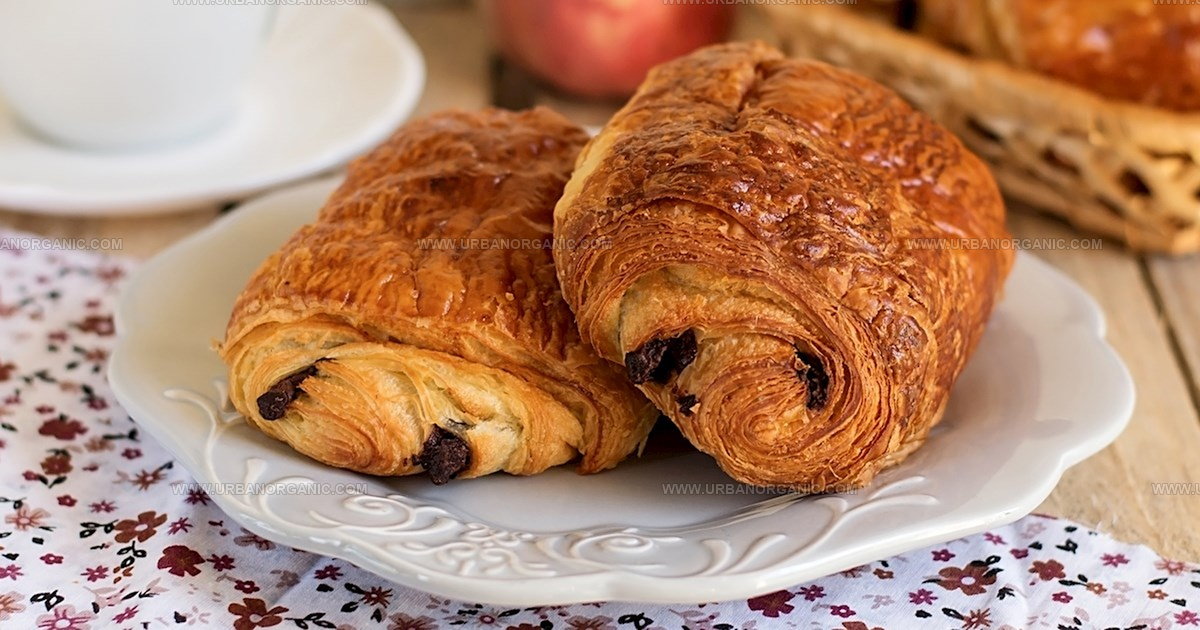
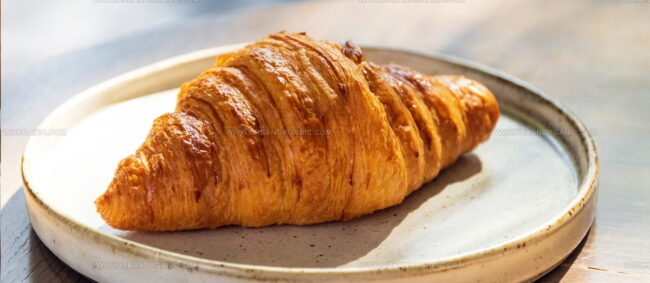
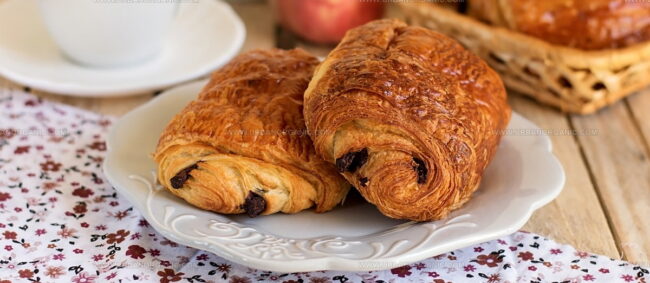
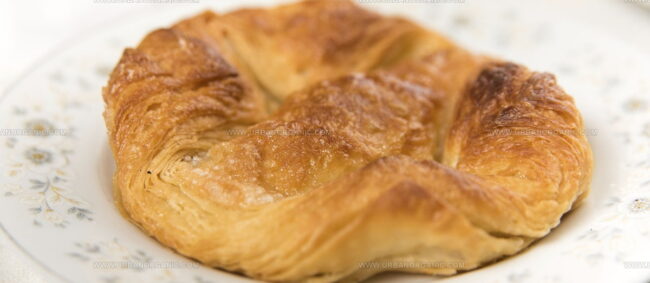
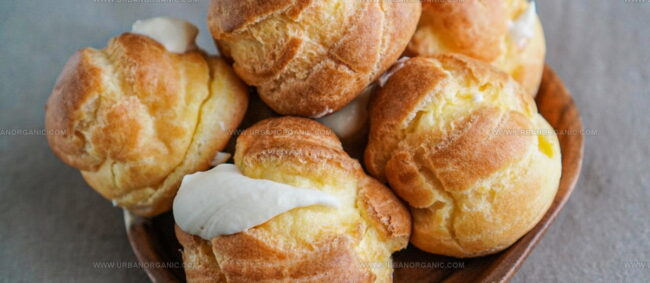
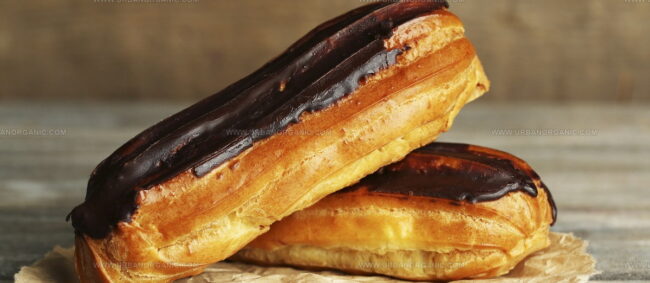
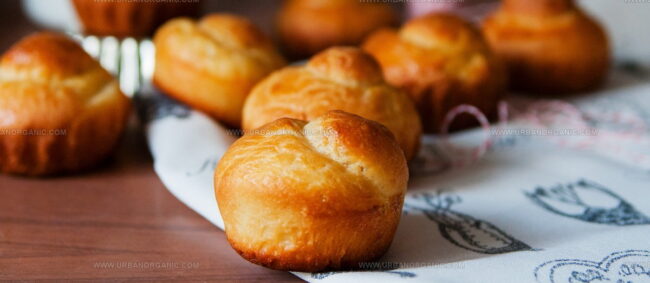
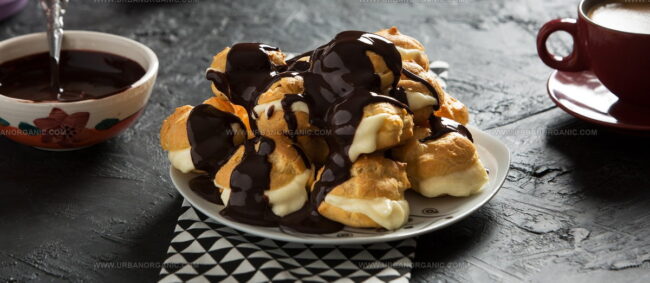
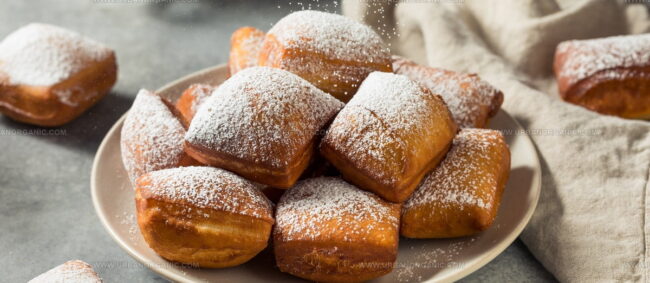
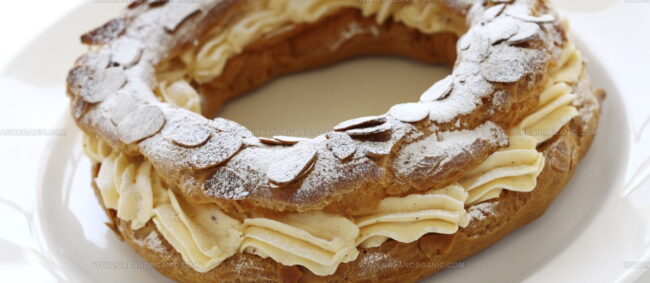
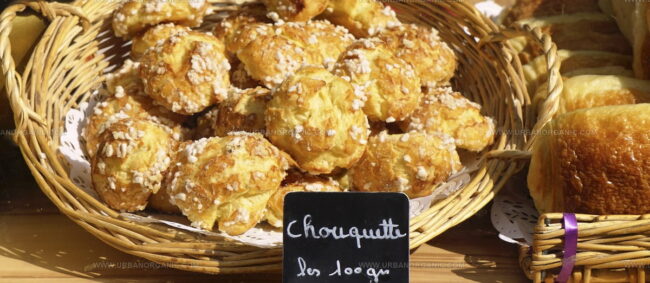
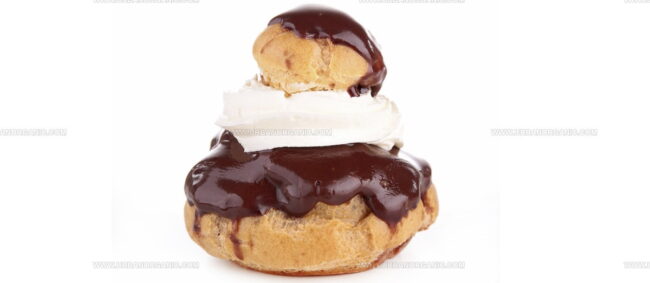
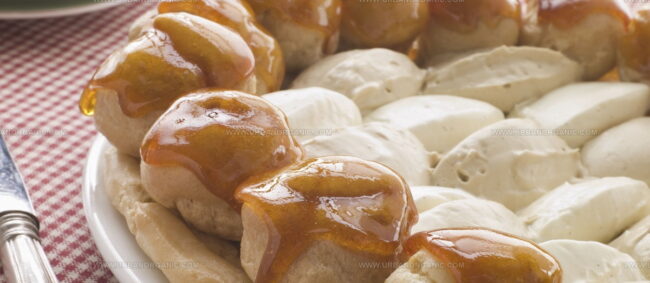
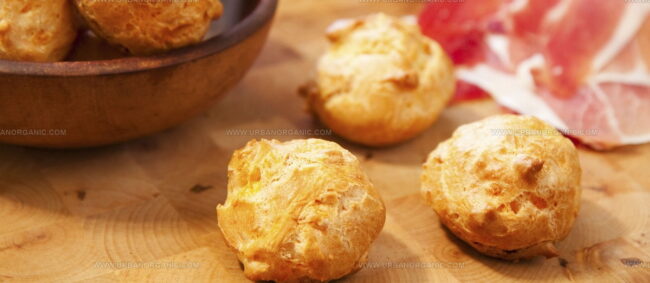
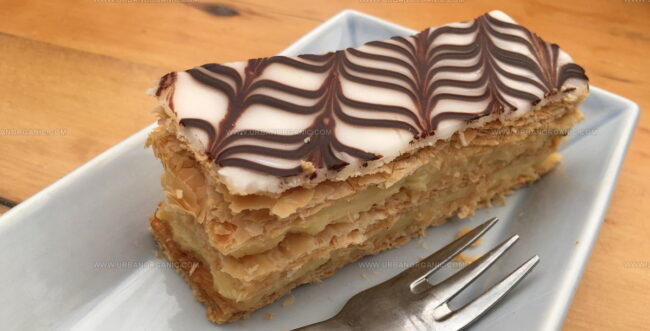
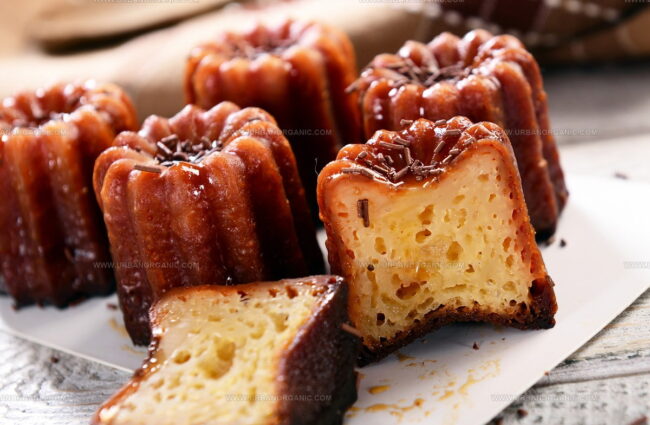
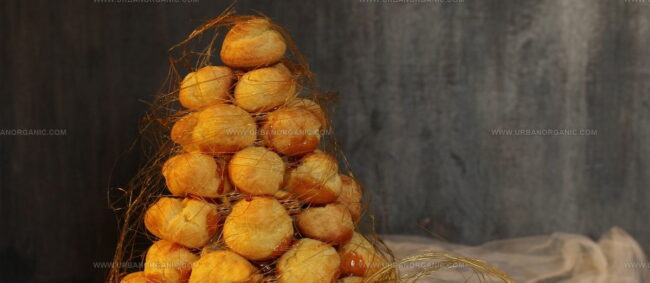
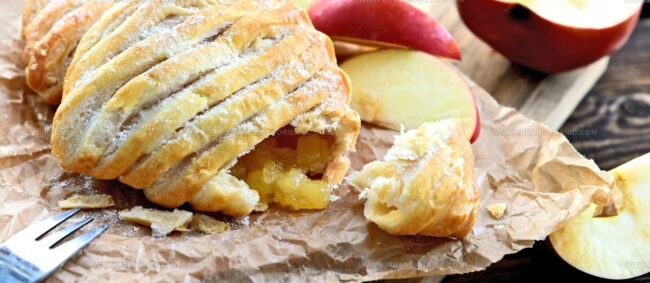
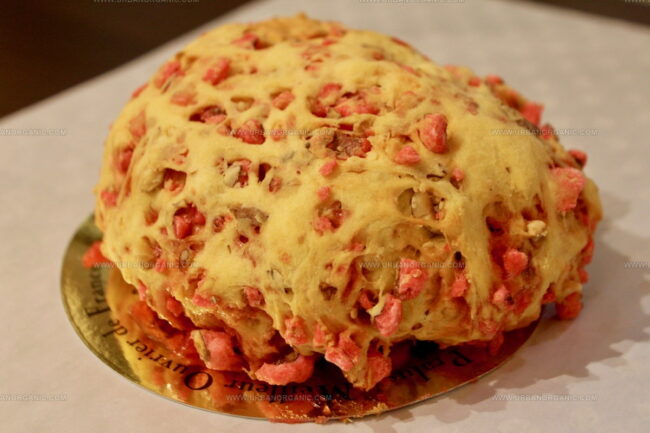
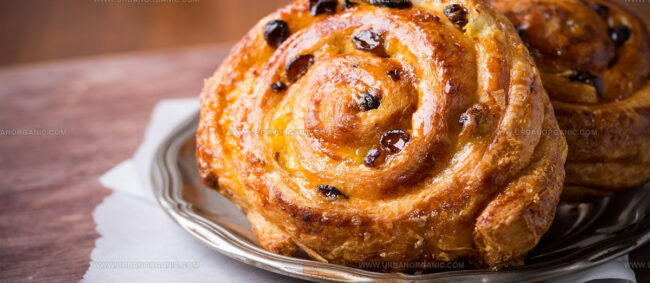
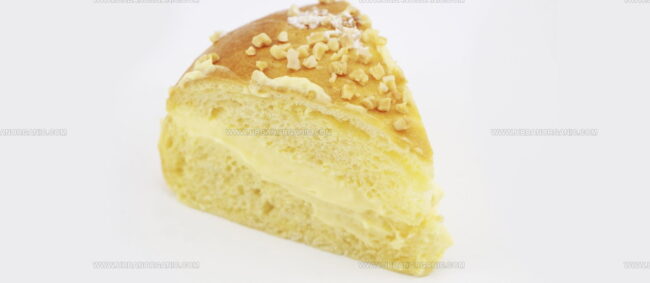
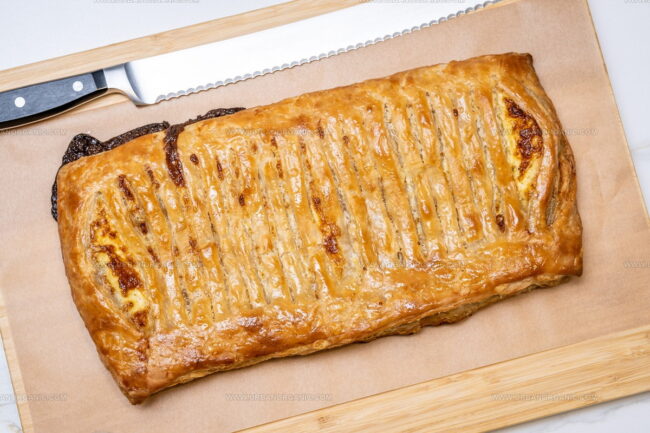
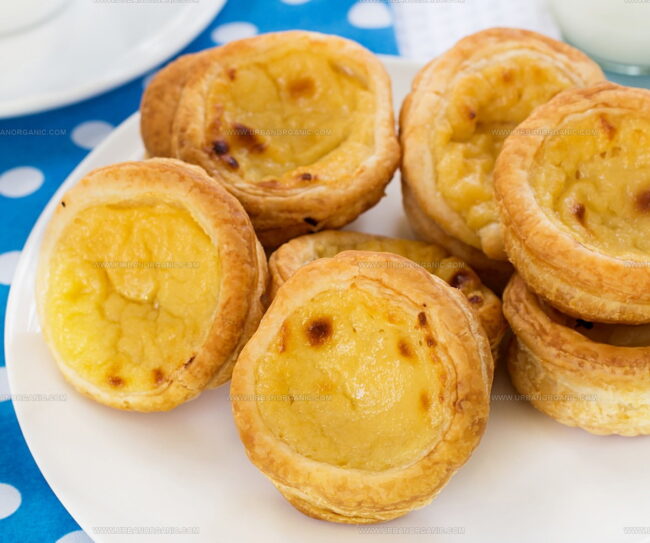
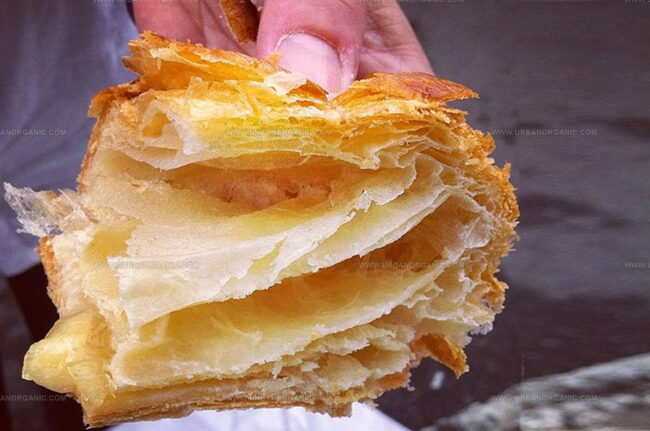
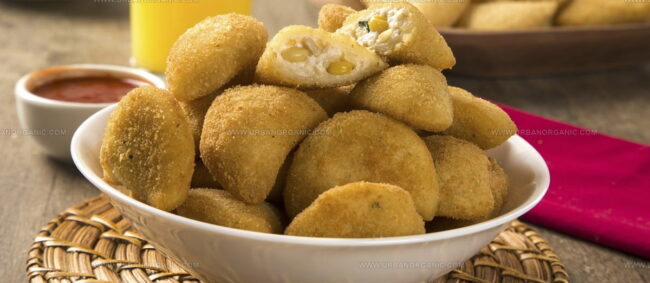
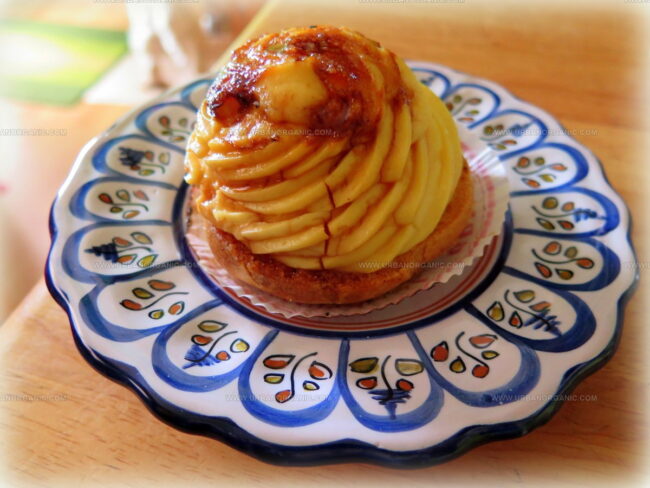
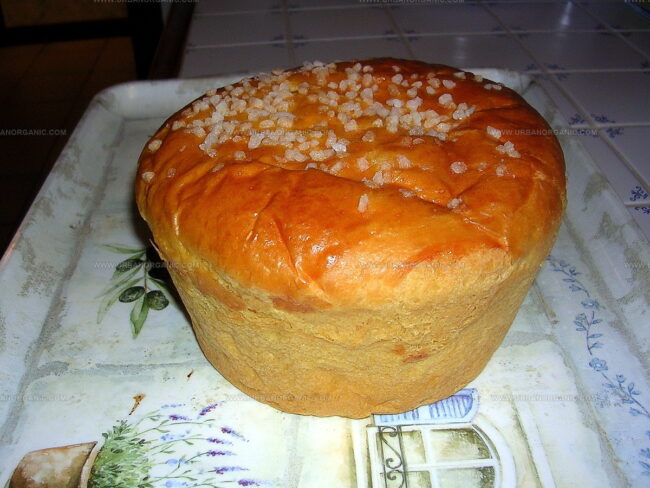
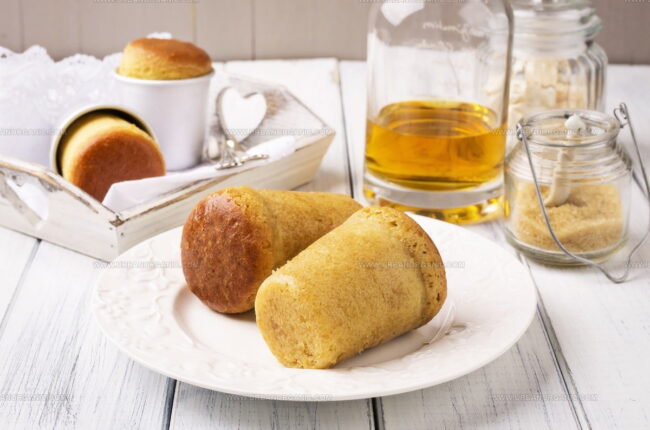
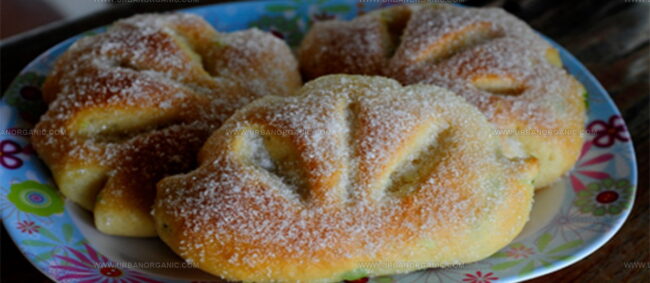
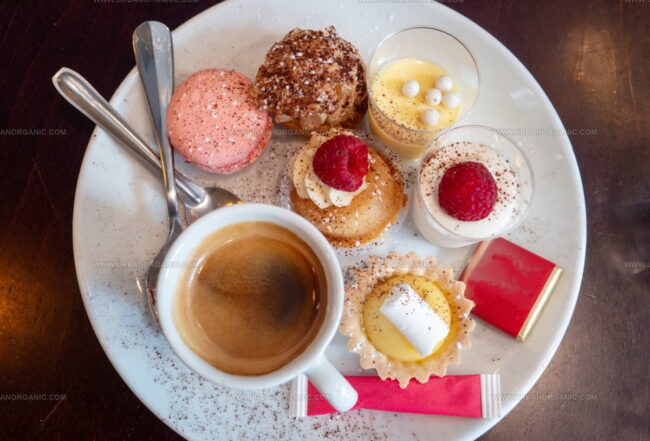
Jessica Martinez
Pastry Chef & Recipe Developer
Expertise
Organic Baking Techniques, Gluten-Free Recipe Development, Southwestern Dessert Specialties, Food Styling and Photography
Education
Santa Fe Community College (SFCC)
Jessica brings the sweet side to Urban Organic with her passion for baking and love for the Southwest. She trained at Santa Fe Community College and has built a career creating beautiful, gluten-free, and organic desserts that feel both nostalgic and new.
She believes baking should be fun, creative, and open to everyone, no matter your diet or skill level. Jessica’s recipes are simple enough to follow, but special enough to remember.